
1. Double click on the MSI file to start the installation.
For Windows 8 or 10, you would need to install using a Command Prompt, started using Run as Administrator. Refer to msiexec.exe Command-Line Options in this guide.
The Windows Install dialog will be displayed:
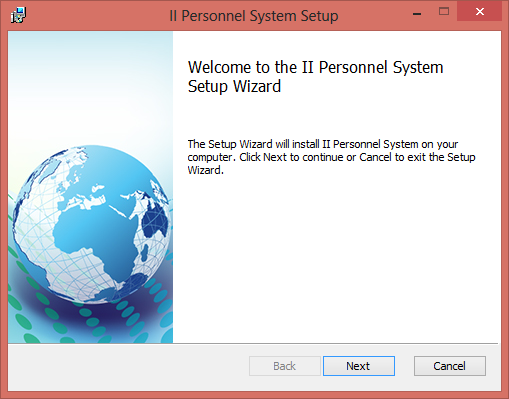
2. Click Next to continue.
3. The End User License Agreement dialog is displayed.
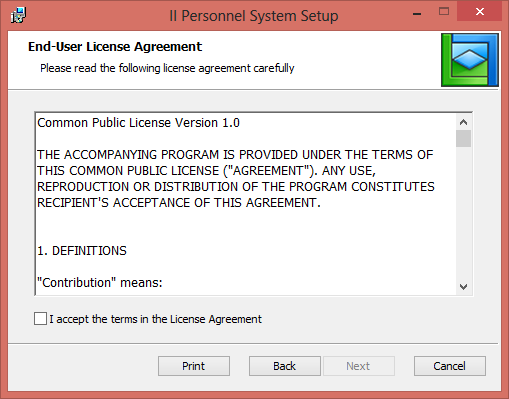
a. A sample license agreement file is supplied in:
…\x_apps\X_Wix\Content\license.rtf
b. You should edit or replace this file to implement your company licensing terms if necessary.
4. Select the "I accept….." check box and click Next to continue.
5. At the Installation Scope dialog, select Install just for you and click Next.
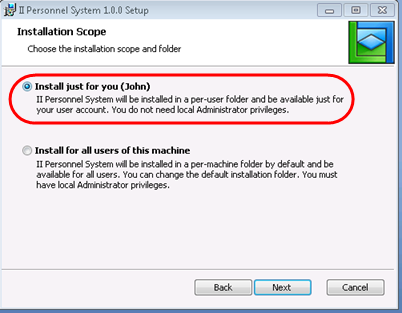
If you are given a choice (as above) select Install just for you. This will depend on whether you are installing to Windows 7, Windows 8 or Windows 10 and whether UAC is enabled.
This dialog will vary between Windows 7 and Windows 8. For example, in Windows 8 and 10, since UAC is always enabled, the following dialog will be shown:

6. Click Next to continue. The Destination Folder dialog will be shown:
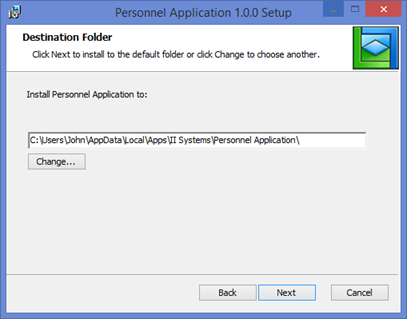
The Change button allows an alternative folder to be selected. The above image is for Windows 7 and the default path will be:
C:\Users\John\AppData\Local\Apps.
Notice that the recommended install path includes the Company and Application Name:
. . .\II Systems\II Personnel System\
The per-user install path will be similar to the following:
C:\Users\John\AppData\Local\Apps\II Systems\II Personnel System Standalone\
7. Click Next to continue. The Choose Setup Type dialog is displayed.
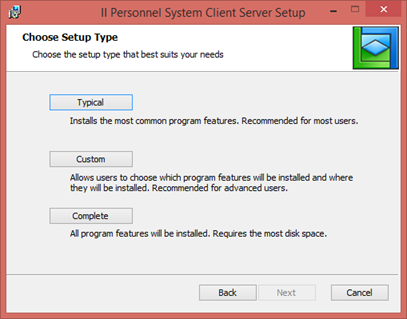
Select any option to continue. Currently any of these options will install the complete package.
8. Click the Install button to continue.

9. The Install dialog will show progress with messages and a progress bar.

10. Click Finish to complete the installation.
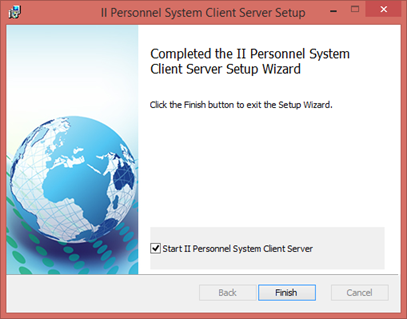
Note that the Start II Personnel System Client Server check box is selected.
11. Your main form will run and invoke the Super Server Connector form.
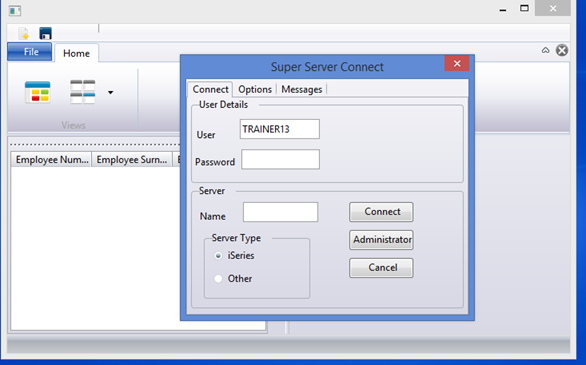
The Server Type defaults to IBM i. Enter your User ID, Password and Server Name. The server name must be defined in the routing table which was included in the package. Use the Administrator button to open the LANSA Communications Administrator if necessary.
12. Select the Options tab which will initially show the default conversion tables. You need to enter the correct values for your system, which will depend on your IBM i code page. For example, QCHRID = 37 is for a US English system. The EBCDIC to ASCII conversion tables used will depend on your national language.
You can easily look up this information from your Visual LANSA install configuration.
To do this:
Select About from the right hand side toolbar.
In the Product Information dialog, select the Installation Details tab.
Expand the InstalledSettings.cfg entry and scroll down to find the Translation Tables for your system:

13. Enter these values in the Options tab in the Super Server Connect form.
14. Click Connect. After connecting with the server, the connect form will close. The main form then populates the browser panel on the left with all employees.
Note: The Connect form will save and restore all entries except the password.
15. As before, you are now able to edit and save an employee having selected it by double clicking in the browser or using the context menu to Open the employee details in the editor. The application handles multiple employees with each open in their own editor instance. A new employee may be created using a toolbar button. All changes are saved using a toolbar button.
The application warns if closing and an employee has been changed and not saved.